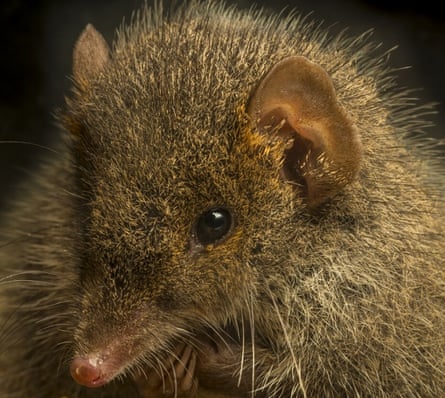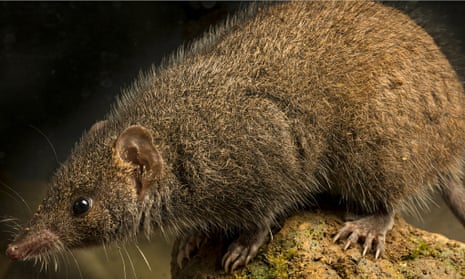A beautiful new species of carnivorous marsupial has been discovered in far south-eastern Queensland and adjacent north-eastern New South Wales. Isolated at high altitude on the Tweed volcanic caldera, in areas of high rainfall, the distinctness of the Black-tailed Antechinus had escaped scientists until now.
The genus Antechinus includes 15 species from Australia. Short-haired with large ears, long whiskers and a pointed snout, these marsupials somewhat resemble shrews in general appearance. Antechinus are small, measuring nose-to-tail from 12 to 20cm and weighing no more than 180g. Males are larger than females and newborns tiny, weighing in at about 4g. The number of surviving young in a litter varies from four to 14, depending on how many teats the mother has in her pouch. Gestation is rapid, taking about four weeks.
Antechinus are in the family Dasyuridae – carnivorous marsupials. The family includes 76 species, limited to Australia and New Guinea. Among them are other small and similarly mouse-like species, but also the cat-sized quolls and the Tasmanian devil, which for their size have the most powerful jaws of any mammal. While diets vary, occasionally including fruits, pollen and vertebrates, most dasyurids are predominantly insectivorous.
Specimens of the new species, Antechinus arktos, were previously known to mammalogists but had been falsely assumed to belong to a common and widely distributed mainland subspecies of the Dusky Antechinus, A swainsonii mimetes. Andrew M Baker and Thomas Y Mutton of the Queensland University of Technology, with co-authors Harry B Hines of the Queensland Parks and Wildlife Service and Steve Van Dyck of the Queensland Museum, have clarified the evolutionary significance of the Black-tailed Antechinus and called attention to its probably threatened status.
Baker and his colleagues, noticing the yellow-orange colouration around the eyes and rump of the new species, as well as its black tail and hind feet, suspected that it might be more than a mere colour variant of Dusky Antechinus. A mitochondrial DNA analysis showed that populations of A arktos differ from those of A swainsonii by 10%, a large, species-sized gap between two supposed populations of a single species.

Armed with this genetic insight, the scientists reexamined anatomical details, confirming several consistent differences. The more vibrant yellow-orange markings on the upper and lower eyelids and cheeks in front of the ears, the similarly coloured rump, and the evenly black hind feet and tail stand in contrast to the Dusky Antechnus. A swainsonii has a more uniformly coloured body with brownish-grey hair; its hind feet and tail have brown fur.
As well as having a very limited geographic distribution, A arktos appears to be locally rare. In spite of evidence that these animals will readily enter traps, extensive efforts to capture them were largely unsuccessful: in 2013-2014 10,000 traps were deployed with only 10 individuals found at a single site. More disturbingly, specimens were not found at some lower-altitude sites where they had once been documented to exist, suggesting that their range may be shrinking. The team reporting the new species fears that climate change is having an impact on populations and that a continued warming trend will place them at even greater risk as they have nowhere left to run, being at the very summit of the World Heritage-listed rainforest of Springbrook. Their recommendation is that the Black-tailed Antechinus be considered endangered and that field studies of its status be continued as they race against time to save the species from extinction.
Like other members of its genus, A arktos is short-lived and semelparous, that is, males reproduce only once in their lifetime. Males and females are promiscuous, often enthusiastically so, with copulation lasting up to 14 hours. At the end of the one-to three-week mating period, all males drop dead – victims of raging testosterone, which causes a malfunction in the stress-hormone cutoff switch. As a result, their immune system shuts down, their hair falls out, they become infested with ticks and mites and death inevitably follows, from internal bleeding or infection. When females give birth a couple of weeks later, not a single male is left alive to help rear the young. Offspring in a single litter are often fathered by multiple males as the female is capable of storing sperm for a few days prior to fertilisation.

Comments (…)
Sign in or create your Guardian account to join the discussion